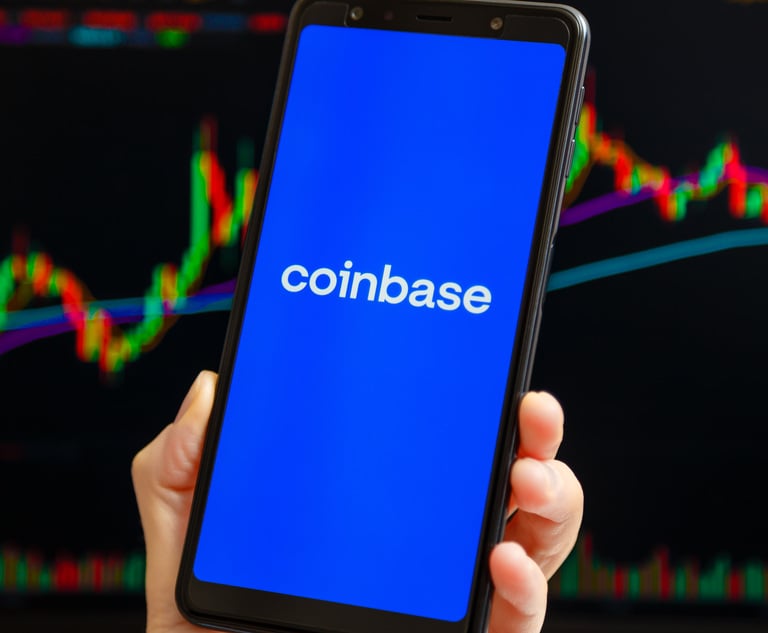Recent ECJ ruling is a blow to stem cell research
Researchers worry the court's decision in Oliver Brstle v. Greenpeace e.V. may impact the advancement of science and investment in the field.
November 30, 2011 at 07:00 PM
6 minute read
Stem cell therapy may be the hope for the future of treating debilitating diseases and brain stem and spinal cord injuries, but it's never been without controversy due to the fact that the embryonic stem cells most useful in treatment are removed from human embryos about five days after fertilization, destroying the embryos in the process. On Oct. 18, the European Court of Justice (ECJ) delivered a blow to stem cell researchers and the institutions that fund them with its ruling in Oliver Brüstle v. Greenpeace e.V., which will block patents in the EU on stem cells derived from human embryos.
Some people believe the case's effect may be blunted by new developments in stem cell research that may someday eliminate the need for human embryonic stem cells. Nonetheless, stem cell researchers in particular are concerned about the ruling's impact on the advancement of science and investment in the field now that EU patent protection is no longer a possibility.
Following the October ECJ ruling, a man at the center of the case spoke out about his own concerns. German neuroscientist Oliver Brüstle is director of the Institute for Reconstructive Neurobiology at Bonn University and grantee of the Bonn University-owned patent that sparked the challenge leading to this ECJ decision. “With this unfortunate decision,” he told the press, “the fruits of years of translational research by European scientists will be wiped away and left to the non-European countries. … How do I explain that to the young scientists in my lab?”
Ordre Public
In 1997 Brüstle filed for a German patent relating to a process to convert human embryonic stem cells to neural precursor cells, which had shown promise for treating numerous neurological diseases. Scientists had already developed clinical applications for them; it was thought that Parkinson's disease, in particular, would respond well to such therapy, and today it is still used as an experimental treatment of the disease.
Germany's patent office granted the patent in 1999 but, in 2004, Greenpeace applied to annul it. The environmental group argued that under a 1998 EU directive that addressed the legal protection of biotechnological inventions, the patent was invalid.
Article 6 of the European Parliament and European Council's directive on the legal protection of biotechnological inventions says that inventions are not patentable where their commercial exploitation would be contrary to morality or ordre public—a particularly European concept, derived from French law, that addresses threats to social structures and public policy. The directive says that in particular, “uses of human embryos for industrial or commercial purposes” shall be considered unpatentable.
Germany's federal patent court sided with Greenpeace, finding that the patent was invalid. Brüstle appealed to Germany's federal court, which referred the case to the ECJ to answer several questions, including what qualifies as a “human embryo” and as “industrial or commercial purposes.”
Directive Definitions
The court ruled that for purposes of the biotech directive, a human embryo is defined as “any human ovum after fertilization, any non-fertilised human ovum into which the cell nucleus from a mature human cell has been transplanted, and any non-fertilised human ovum whose division and further development have been stimulated by parthenogenesis.”
It reasoned that the purpose of the biotech directive was to eliminate the possibility of patentability “where respect for human dignity could thereby be affected.”
On the second question, the court ruled that “industrial and commercial purposes,” within the meaning of the directive on patentability, do include purposes of scientific research. “[T]he use of human embryos for the purposes of research which constitutes the subject matter of a patent application cannot be separated from the patent itself and the rights attaching to it,” the court wrote.
The third question the German court presented to the ECJ was whether an invention is unpatentable where it concerns a product in which the production necessitates the prior destruction of human embryos, or a process that requires a base material derived from the destruction of human embryos, even though its purpose is not the use of human embryos. The ECJ ruled that yes, such inventions are unpatentable no matter what stage at which the destruction may occur.
John Wilkinson, a partner at Reed Smith in London, says that patent applicants may try new ways of drafting their patent applications to avoid the effects of the ruling.
But the possibility exists that some companies, worried about competition, may stop publishing their findings. “Society loses because the information isn't as available as possible,” Wilkinson says. “European society could also lose because a company may only market its stem cell-based product or therapy in countries where it has some realistic patent protection.”
Uncertain Impact
The case could really hurt research already in motion.
“The most affected people would be companies that already bought into embryonic stem cells,” says Roger Pedersen, director of research in the Laboratory for Regenerative Medicine at University of Cambridge. He lists three U.S.-based companies that have launched clinical trials on stem cell treatments of spinal cord injury, Stargardt's Macular Dystrophy and macular degeneration: “Geron, ACT [Advanced Cell Technology], Pfizer, where they're affected by funding and patent protection on the old type of stem cells,” he says. “But obviously it all depends on the ultimate outcome of this comparison of old and new stem cells.”
The “new cells,” according to Pedersen, are induced pluripotent stem cells, which have many of the properties of embryonic stem cells but are created by genetically reprogramming adult cells, such as skin cells. They offer benefits over human embryonic stem cells, Pedersen says: They can be made from a patient's own cells for a genetic match, which removes the need for immune suppression.
Scientists are still determining what differences exist between the induced cells and embryonic stem cells, but Brüstle v. Greenpeace could increase the use of induced pluripotent stem cells.
In the meantime, Pedersen points out that scientists could continue research without patent protection. “If you're doing something very difficult, something only one or two organizations in the world are doing, you could probably go on doing it without a patent,” he says.
This content has been archived. It is available through our partners, LexisNexis® and Bloomberg Law.
To view this content, please continue to their sites.
Not a Lexis Subscriber?
Subscribe Now
Not a Bloomberg Law Subscriber?
Subscribe Now
NOT FOR REPRINT
© 2024 ALM Global, LLC, All Rights Reserved. Request academic re-use from www.copyright.com. All other uses, submit a request to [email protected]. For more information visit Asset & Logo Licensing.
You Might Like
View All

Coinbase Hit With Antitrust Suit That Seeks to Change How Crypto Exchanges Operate
3 minute read
Baker Botts' Biopharma Client Sues Former In-House Attorney, Others Alleging Extortion Scheme
Trending Stories
- 1'Largest Retail Data Breach in History'? Hot Topic and Affiliated Brands Sued for Alleged Failure to Prevent Data Breach Linked to Snowflake Software
- 2Former President of New York State Bar, and the New York Bar Foundation, Dies As He Entered 70th Year as Attorney
- 3Legal Advocates in Uproar Upon Release of Footage Showing CO's Beat Black Inmate Before His Death
- 4Longtime Baker & Hostetler Partner, Former White House Counsel David Rivkin Dies at 68
- 5Court System Seeks Public Comment on E-Filing for Annual Report
Who Got The Work
Michael G. Bongiorno, Andrew Scott Dulberg and Elizabeth E. Driscoll from Wilmer Cutler Pickering Hale and Dorr have stepped in to represent Symbotic Inc., an A.I.-enabled technology platform that focuses on increasing supply chain efficiency, and other defendants in a pending shareholder derivative lawsuit. The case, filed Oct. 2 in Massachusetts District Court by the Brown Law Firm on behalf of Stephen Austen, accuses certain officers and directors of misleading investors in regard to Symbotic's potential for margin growth by failing to disclose that the company was not equipped to timely deploy its systems or manage expenses through project delays. The case, assigned to U.S. District Judge Nathaniel M. Gorton, is 1:24-cv-12522, Austen v. Cohen et al.
Who Got The Work
Edmund Polubinski and Marie Killmond of Davis Polk & Wardwell have entered appearances for data platform software development company MongoDB and other defendants in a pending shareholder derivative lawsuit. The action, filed Oct. 7 in New York Southern District Court by the Brown Law Firm, accuses the company's directors and/or officers of falsely expressing confidence in the company’s restructuring of its sales incentive plan and downplaying the severity of decreases in its upfront commitments. The case is 1:24-cv-07594, Roy v. Ittycheria et al.
Who Got The Work
Amy O. Bruchs and Kurt F. Ellison of Michael Best & Friedrich have entered appearances for Epic Systems Corp. in a pending employment discrimination lawsuit. The suit was filed Sept. 7 in Wisconsin Western District Court by Levine Eisberner LLC and Siri & Glimstad on behalf of a project manager who claims that he was wrongfully terminated after applying for a religious exemption to the defendant's COVID-19 vaccine mandate. The case, assigned to U.S. Magistrate Judge Anita Marie Boor, is 3:24-cv-00630, Secker, Nathan v. Epic Systems Corporation.
Who Got The Work
David X. Sullivan, Thomas J. Finn and Gregory A. Hall from McCarter & English have entered appearances for Sunrun Installation Services in a pending civil rights lawsuit. The complaint was filed Sept. 4 in Connecticut District Court by attorney Robert M. Berke on behalf of former employee George Edward Steins, who was arrested and charged with employing an unregistered home improvement salesperson. The complaint alleges that had Sunrun informed the Connecticut Department of Consumer Protection that the plaintiff's employment had ended in 2017 and that he no longer held Sunrun's home improvement contractor license, he would not have been hit with charges, which were dismissed in May 2024. The case, assigned to U.S. District Judge Jeffrey A. Meyer, is 3:24-cv-01423, Steins v. Sunrun, Inc. et al.
Who Got The Work
Greenberg Traurig shareholder Joshua L. Raskin has entered an appearance for boohoo.com UK Ltd. in a pending patent infringement lawsuit. The suit, filed Sept. 3 in Texas Eastern District Court by Rozier Hardt McDonough on behalf of Alto Dynamics, asserts five patents related to an online shopping platform. The case, assigned to U.S. District Judge Rodney Gilstrap, is 2:24-cv-00719, Alto Dynamics, LLC v. boohoo.com UK Limited.
Featured Firms
Law Offices of Gary Martin Hays & Associates, P.C.
(470) 294-1674
Law Offices of Mark E. Salomone
(857) 444-6468
Smith & Hassler
(713) 739-1250







